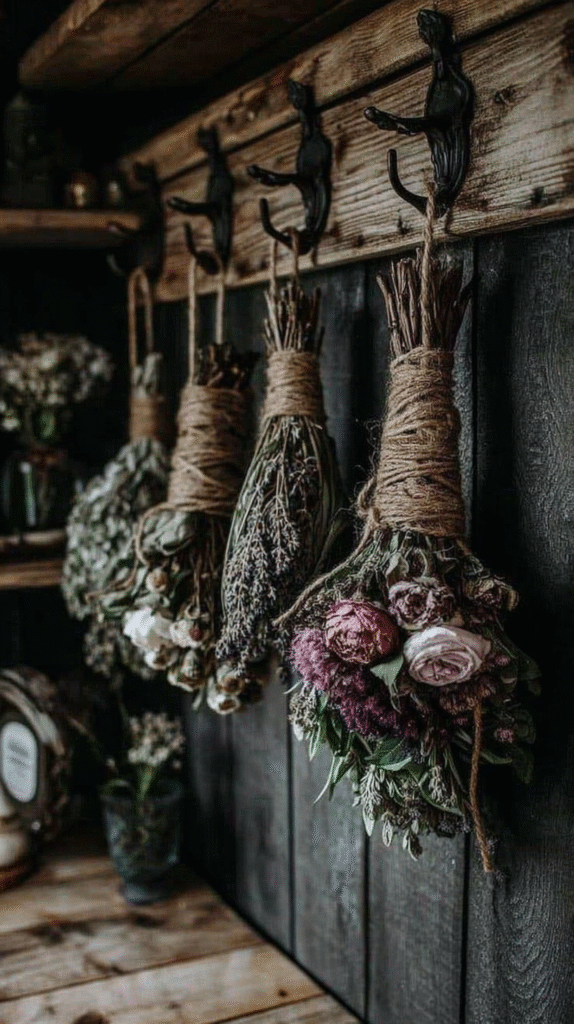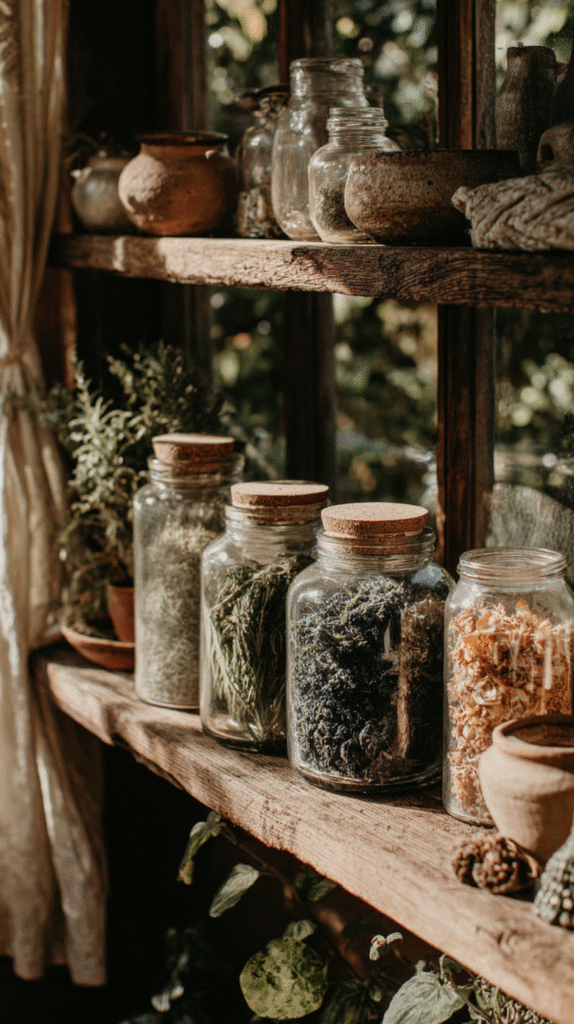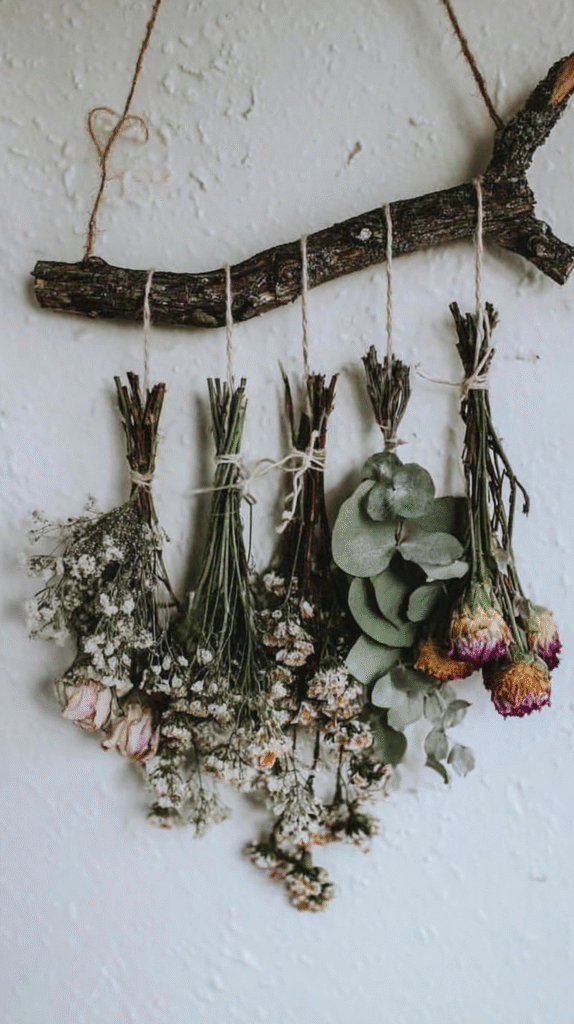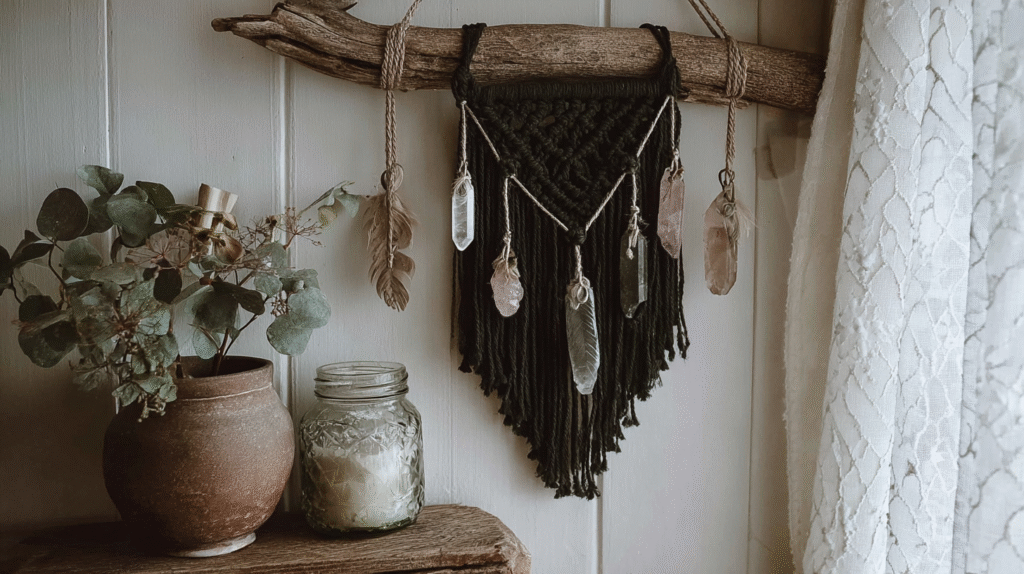This post may contain affiliate links, including those from Amazon Associates. If you make a purchase through these links, I may earn a commission at no additional cost to you. Learn more about our affiliate policy.
There’s a special kind of magic in saving what’s beautiful before it fades. When you hang herbs or flowers to dry, you’re keeping a small piece of a season alive. The color softens, the scent deepens, and what remains becomes a gentle reminder of how fleeting and precious nature’s moments are.
Drying flowers and herbs is one of those timeless practices that fits perfectly into a creative, soulful life. It’s simple, grounding, and endlessly useful.
Whether you want to make dried flower art, craft nature-inspired decor, or keep herbs for future rituals, this guide will show you how to do it beautifully and naturally.
Choosing What to Harvest
The best materials are the ones that already speak to you, those flowers that catch your eye on a walk, herbs from your balcony garden, or stems from a farmer’s market bouquet you don’t want to throw away. Choose plants that are healthy, clean, and unwilted.
For flowers, pick them just before they fully open so they keep their shape as they dry.
For herbs, harvest right before they bloom, when their oils and fragrance are at their peak. The morning, after the dew has lifted but before the sun gets too hot, is ideal.
Before you cut, take a moment to notice the plant’s form and scent. A brief thank-you or breath of appreciation helps turn this simple task into a ritual of connection. You’re not just gathering materials—you’re gathering energy that will live on in what you create.

What You’ll Need
- Sharp scissors or garden shears
- String, twine, or rubber bands
- A cool, dry, dark space with good airflow
- Mesh rack, hanging hooks, or clothes hangers
- Paper towels or parchment sheets (for pressing)
- Airtight jars, tins, or boxes for storage
Optional tools like silica gel or a flower press can help preserve color and shape for more delicate blooms, but they’re not essential. The beauty of this process lies in its simplicity.
Air Drying

Air drying is the most natural and satisfying method. Gather a bundle of stems, tie them loosely with twine, and hang them upside down in a shaded, well-ventilated space. A closet, attic, or corner near a window (without direct sun) works well.
Depending on the thickness of the plant, drying takes one to three weeks. You’ll know they’re ready when the petals or leaves feel papery and the stems snap cleanly.
This method works best for herbs like lavender, rosemary, or sage, and for rustic, textural flowers such as yarrow, strawflower, or statice. Once dried, they hold their shape and scent beautifully, perfect for craft projects or altar arrangements.
Pressing
If you love flat, delicate pieces for journals, collages, or shadow boxes, pressing is ideal. Lay flowers or leaves between sheets of parchment or blotting paper, then tuck them inside a heavy book or flower press.
Check after a week or two. They should feel crisp and dry, ready to frame or glue into your creative projects. Pressed botanicals carry an old-world charm and are lovely for journaling, spell books, or stationery.
For an easy layered look, mix pressed petals with handwritten notes or bits of linen paper when creating your own ritual pages or mood boards.
Silica or Oven Drying
Some flowers like roses, hydrangeas, or peonies benefit from more controlled methods if you want to preserve their shape and color. Silica gel (available in craft stores) allows you to bury blooms gently in powder and pull them out a week later still looking vibrant.
Alternatively, you can dry them in a warm oven set on low, around 100–110°F, with the door slightly open. Keep an eye on them every ten minutes until they’re crisp. This approach is best for small batches or special keepsakes.
These methods take a bit more effort, but they’re worth it when you want pieces that keep their color and form for decor or gift projects.
How to Store Your Dried Flowers and Herbs

Once everything is completely dry, store your treasures away from moisture and direct light. Airtight glass jars are perfect for herbs you plan to use in baths, sachets, or teas. For flowers, paper boxes or tins lined with tissue help them breathe while keeping dust away.
If you display dried arrangements, dust them gently with a soft brush or use a hairdryer on a cool, low setting from a distance. Every so often, replace pieces that have faded. Nature’s cycle is about renewal, after all.
Creative Ways to Use Dried Flowers and Herbs

Drying your own botanicals opens a world of possibility. Here are a few soulful ways to weave them into your daily life.
Create Dried Flower Wall Hangings
Dried flowers are beautiful as wall hangings because they add warmth and natural texture that evolves gently over time. You can tie small bundles with twine and hang them vertically, or attach stems to a branch to create a rustic hanging bouquet.
Try arranging herbs and flowers together by color or season for a living artwork that changes throughout the year. This kind of display turns your craftwork into home decor infused with meaning and can be linked to your personal rituals or intentions.
Here are more ideas for dried flower wall hangings.
Craft Personal Ritual Objects
Add dried herbs to small charm jars, candle toppers, or altar bowls. A few lavender buds in a pocket or pouch can be a calming charm you carry with you through the day.
Style a Seasonal Altar

Rotate dried botanicals on your altar to reflect the rhythm of the earth. In winter, use cedar and rosemary for grounding; in spring, rose petals and thyme for renewal. Each arrangement becomes an offering of gratitude and intention.
Related: 8 Beautiful Spiritual Altar Ideas For Every Season
Make Handmade Gifts
Pressed flower bookmarks, herbal sachets, and beeswax candles rolled with petals all make thoughtful gifts. They carry both your craft and a little essence of nature.
Use in Journaling and Art
Tuck pressed leaves into your journal, glue them into art collages, or create nature-inspired wall art. Combining natural textures with handwritten reflection adds depth to your creative practice.
Bringing Ritual Into the Process
Drying plants isn’t just about technique, it’s about slowing down. The waiting period itself becomes an invitation to breathe and trust nature’s timing.
When you hang your bundles, take a moment to set an intention for what they’ll become. Maybe the rosemary will find its way into a calming bath, or the rose petals will later rest on your altar. Allow the process to feel alive and cyclical.
The act of preservation mirrors inner transformation. What once bloomed in full color is now transformed into something quieter but no less beautiful. Working with dried materials can remind you that even in stillness, there is creation, memory, and meaning.
Tips for Beginners
- Start small. Try drying one bouquet or herb bundle at a time until you find your rhythm.
- Choose sturdy flowers for your first attempt like lavender, strawflower, and eucalyptus are forgiving and easy to handle.
- Avoid humid environments if possible; use a fan nearby if your home tends to stay damp.
- Don’t be discouraged by imperfect results. Every batch teaches you something about patience and observation.
With time, you’ll develop an intuitive sense for what works best in your space.
Reflection
Each time you hang a bundle to dry, you’re engaging in an ancient partnership with nature. You’re saying yes to continuity and to beauty that shifts form but never disappears.
Your dried flowers and herbs can become decor, creative tools, or symbols on your altar, but more importantly, they remind you to live in rhythm with the seasons. Let them inspire you to gather, craft, and create with presence.



